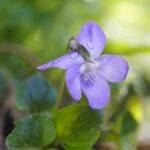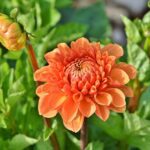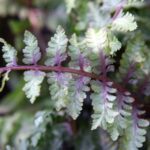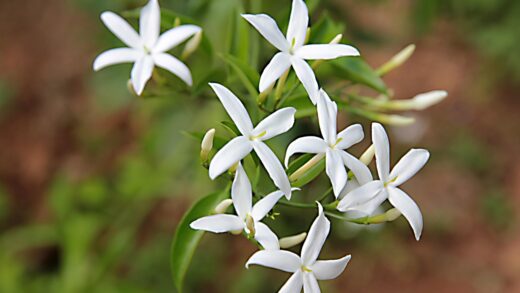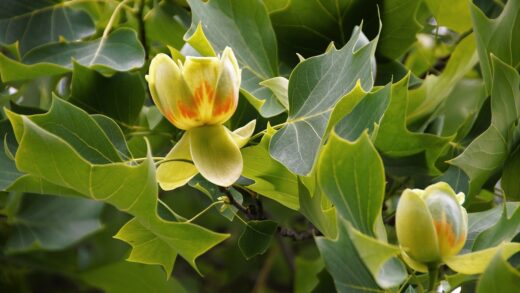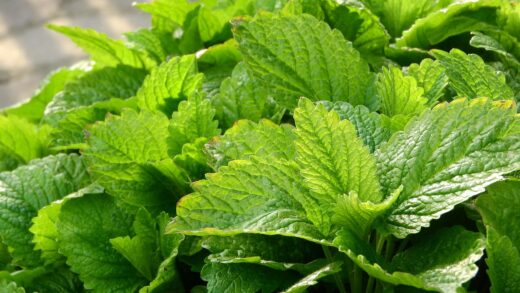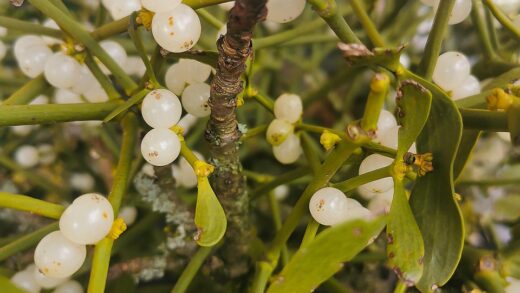The successful establishment of Geum coccineum, or scarlet avens, begins with thoughtful planting, a process that lays the groundwork for years of vibrant blooms and healthy growth. Whether you are introducing nursery-bought specimens into your garden or propagating your own, the techniques employed during this initial phase are critical. Proper planting ensures the root system establishes quickly and efficiently, allowing the plant to acclimate to its new environment with minimal stress. This foundational care is the first and most important step in cultivating a robust and floriferous perennial that will become a cherished part of your garden landscape.
Before a single plant goes into the ground, meticulous preparation of the planting site is paramount. Start by selecting a location that offers the ideal balance of sunlight and drainage, as scarlet avens thrives in full sun to light shade and requires soil that is moist but never waterlogged. Clear the area of all weeds and existing vegetation, which would otherwise compete with the new plants for essential resources like water, nutrients, and light. It is highly beneficial to dig over the entire planting area to a depth of at least 30 centimeters to loosen and aerate the soil, which encourages strong root development.
Once the area is cleared and cultivated, the next step is to improve the soil’s quality and structure. Geum coccineum appreciates a rich, humusy soil, so incorporating a generous amount of organic matter is one of the best things you can do for its long-term health. Spread a 5-10 centimeter layer of well-rotted compost, leaf mould, or aged manure over the surface and thoroughly mix it into the native soil. This amendment not only provides a slow-release source of nutrients but also significantly improves the soil’s ability to retain moisture while simultaneously enhancing its drainage capabilities.
With the site fully prepared, you can now consider the layout and spacing of your plants. Scarlet avens typically grows into clumps about 30-45 centimeters wide, so spacing them accordingly is crucial to prevent future overcrowding. Proper spacing ensures that each plant receives adequate sunlight and, most importantly, allows for good air circulation around the foliage. This simple foresight in planning is a powerful preventative measure against the development of common fungal diseases like powdery mildew, contributing to a healthier overall planting.
The process of planting
When you are ready to plant your nursery-grown scarlet avens, begin by digging a hole that is approximately twice as wide as the plant’s root ball and just as deep. The extra width allows you to loosen the soil around the hole, making it easier for the new roots to penetrate the surrounding earth as they grow. It is a good practice to add a handful of bone meal or a balanced granular fertilizer to the bottom of the hole and mix it in with the soil to provide a nutritional boost for the establishing roots. This initial feeding helps the plant get off to a strong start.
More articles on this topic
Carefully remove the plant from its container, making an effort to keep the root ball intact. If the plant is root-bound, meaning the roots are densely circling the bottom of the pot, it is important to gently tease them apart with your fingers or score the sides of the root ball with a knife in a few places. This encourages the roots to grow outwards into the new soil rather than continuing to circle in on themselves. Place the plant in the center of the hole, ensuring that the top of the root ball is level with the surrounding soil surface.
Once the plant is correctly positioned, begin backfilling the hole with the amended soil you excavated earlier. Gently firm the soil around the root ball with your hands to eliminate any large air pockets, which can cause the roots to dry out. Avoid compacting the soil too heavily, as this can impede water drainage and root growth. The goal is to ensure good contact between the roots and the soil, providing stability and access to moisture and nutrients.
The final and most crucial step in the planting process is to water the new plant thoroughly. Provide a deep, slow soaking that completely saturates the root zone and the surrounding soil. This initial watering is essential for settling the soil around the roots and providing the moisture necessary to reduce transplant shock. Continue to water the newly planted Geum regularly for the first few weeks, keeping the soil consistently moist until the plant shows clear signs of new growth, indicating it has successfully established itself in its new home.
Propagation from seed
Propagating scarlet avens from seed is a rewarding and cost-effective way to generate a large number of plants. The seeds of Geum coccineum require a period of cold stratification to break their dormancy and trigger germination. You can achieve this naturally by sowing the seeds directly into a prepared garden bed or seed tray in the autumn, allowing the winter cold to do the work for you. Alternatively, for more controlled results, you can stratify the seeds artificially by mixing them with a small amount of damp sand or vermiculite, placing them in a sealed plastic bag, and storing them in a refrigerator for 4-6 weeks before sowing.
More articles on this topic
For indoor sowing, which typically gives you a head start on the growing season, begin the process in late winter or early spring. After the cold stratification period, fill seed trays or small pots with a high-quality, sterile seed-starting mix. Lightly press the seeds onto the surface of the soil, as they require light to germinate, and then cover them with a very fine dusting of vermiculite or soil. This helps to maintain humidity around the seed without blocking the necessary light.
Maintaining the right conditions is key to successful germination. Place the seed trays in a warm location with plenty of indirect light, and keep the soil consistently moist but not wet. Using a spray bottle to mist the surface is an effective way to water without dislodging the tiny seeds. Covering the trays with a plastic dome or a clear plastic bag can help to create a humid microclimate, which aids germination. You can typically expect the seeds to sprout within 3 to 4 weeks under these optimal conditions.
Once the seedlings have emerged and developed their first set of true leaves, they can be carefully transplanted into individual pots to give them more space to grow. Continue to grow them in a bright, protected location, gradually acclimating them to outdoor conditions over a week or two—a process known as hardening off. This gradual exposure to sun, wind, and fluctuating temperatures prevents shock when they are finally planted out into their permanent positions in the garden after all danger of frost has passed.
Propagation by division
Division is the most common and reliable method for propagating Geum coccineum, offering a way to create new, genetically identical plants from a mature clump. This technique not only increases your plant stock but also serves as a crucial maintenance task to rejuvenate overgrown and congested clumps, ensuring their continued health and flowering performance. The best time to undertake this task is in the early spring as new growth appears or in the autumn after flowering has finished. These periods offer cooler temperatures and more reliable moisture, which helps the new divisions establish with less stress.
To begin the process, use a sturdy garden fork to carefully dig around the perimeter of the entire plant clump, working your way inwards to lift the whole root ball from the ground. Try to be as gentle as possible to minimize root damage, but understand that some breakage is inevitable. Once the clump is free, lift it onto a tarp or a clear patch of ground and gently remove as much excess soil from the roots as you can. This will allow you to see the structure of the crowns and roots more clearly.
With the root system exposed, you can now proceed with separating the clump. For smaller clumps, you may be able to pull the sections apart by hand. For larger, more established clumps, you will likely need to use a sharp, clean spade, a hori-hori knife, or two garden forks inserted back-to-back into the center of the clump to pry it apart. Aim to create new sections that each have a healthy mass of roots and several strong growing points or shoots attached.
Immediately after separating the divisions, it is important to replant them before the delicate roots have a chance to dry out. You can replant a healthy section back into the original location after amending the soil with fresh compost, and plant the other divisions in new, well-prepared sites around the garden. Plant them at the same depth they were growing before, firm the soil around them, and water them in thoroughly. Consistent watering over the next few weeks is vital for their successful establishment and vigorous growth in the following season.
Post-propagation care
Following any propagation method, whether from seed or by division, the subsequent care provided to the young plants is critical for their survival and long-term success. For newly planted divisions, the most important requirement is consistent moisture. The root systems have been disturbed and need time to recover and grow into the surrounding soil, so keeping the soil evenly moist prevents the plants from drying out and helps reduce transplant shock. Avoid letting the soil become completely dry, especially during the first month after planting.
Young seedlings that have been transplanted into the garden also require careful attention. Their small, developing root systems make them vulnerable to drying out quickly. Water them gently but regularly, and consider providing some temporary shade from the intense midday sun for the first week or two to help them acclimate. Protecting them from pests like slugs and snails, which are particularly fond of tender new growth, is also a wise precaution. A light layer of mulch can help conserve moisture and deter some pests.
Avoid the temptation to fertilize newly propagated plants immediately. Both new divisions and young seedlings have sensitive, developing roots that can be easily burned by concentrated fertilizers. It is best to wait at least a few weeks until you see clear signs of new growth, which indicates that the root system is active and establishing itself. At that point, a very dilute liquid feed can be applied, or you can simply rely on the nutrients provided by the compost you incorporated during soil preparation.
Patience is a key component of post-propagation care. It may take some time for the new plants to establish and begin to grow vigorously. Divisions made in the autumn may not show significant top growth until the following spring, focusing their energy instead on root development. Similarly, seed-grown plants may not flower in their first year. Monitor their progress, provide consistent care, and trust that your efforts in proper propagation and aftercare will be rewarded with healthy, thriving scarlet avens.










